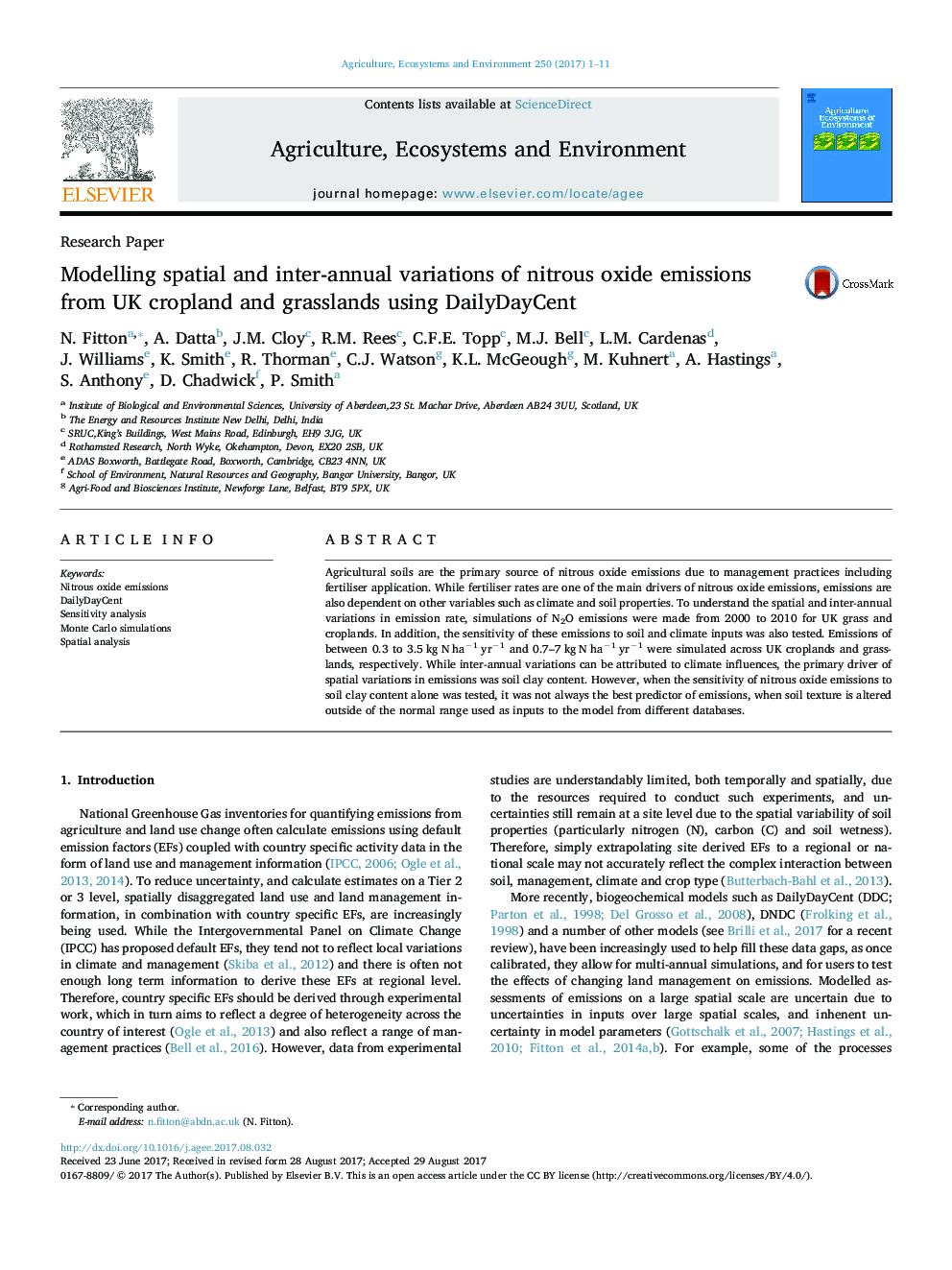| Article ID | Journal | Published Year | Pages | File Type |
|---|---|---|---|---|
| 5537751 | Agriculture, Ecosystems & Environment | 2017 | 11 Pages |
Abstract
Agricultural soils are the primary source of nitrous oxide emissions due to management practices including fertiliser application. While fertiliser rates are one of the main drivers of nitrous oxide emissions, emissions are also dependent on other variables such as climate and soil properties. To understand the spatial and inter-annual variations in emission rate, simulations of N2O emissions were made from 2000 to 2010 for UK grass and croplands. In addition, the sensitivity of these emissions to soil and climate inputs was also tested. Emissions of between 0.3 to 3.5 kg N haâ1 yrâ1 and 0.7-7 kg N haâ1 yrâ1 were simulated across UK croplands and grasslands, respectively. While inter-annual variations can be attributed to climate influences, the primary driver of spatial variations in emissions was soil clay content. However, when the sensitivity of nitrous oxide emissions to soil clay content alone was tested, it was not always the best predictor of emissions, when soil texture is altered outside of the normal range used as inputs to the model from different databases.
Related Topics
Life Sciences
Agricultural and Biological Sciences
Agronomy and Crop Science
Authors
N. Fitton, A. Datta, J.M. Cloy, R.M. Rees, C.F.E. Topp, M.J. Bell, L.M. Cardenas, J. Williams, K. Smith, R. Thorman, C.J. Watson, K.L. McGeough, M. Kuhnert, A. Hastings, S. Anthony, D. Chadwick, P. Smith,
